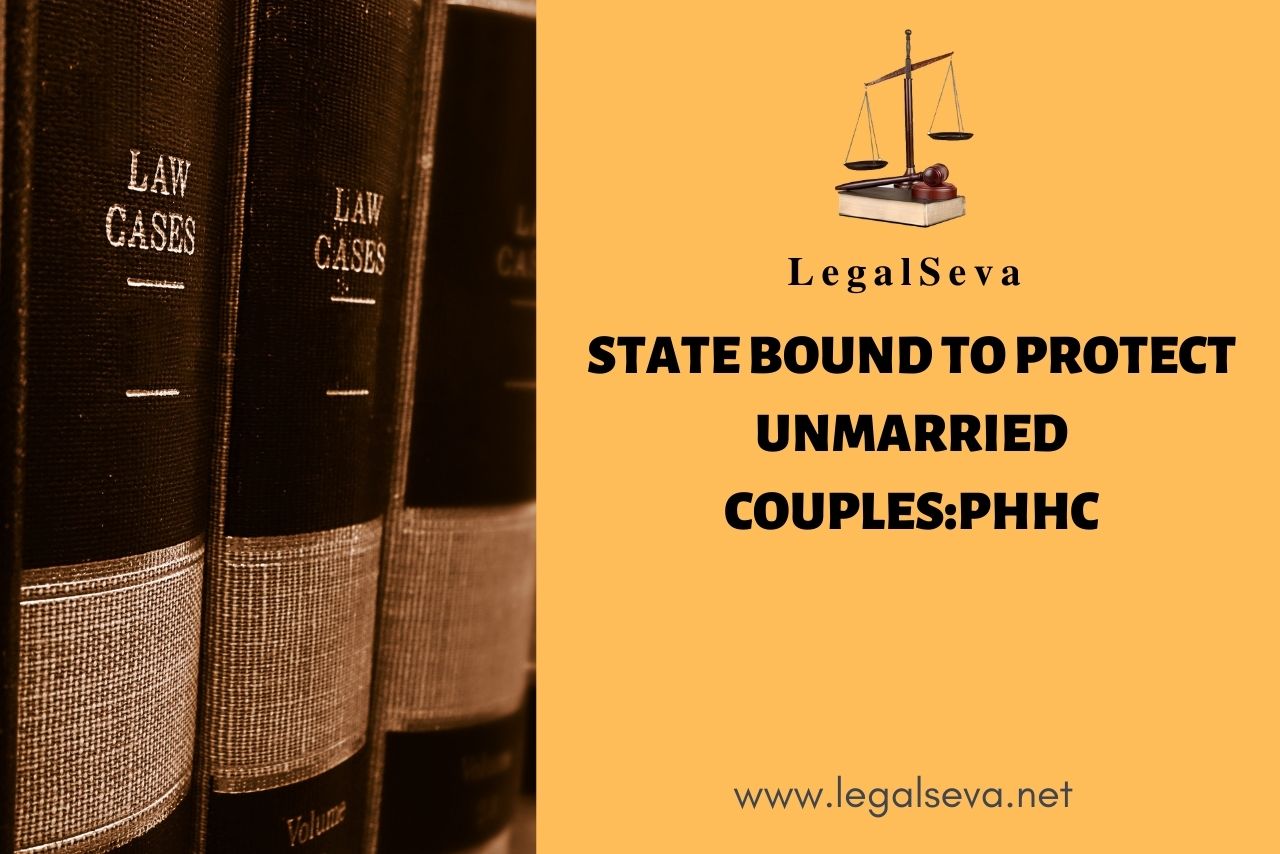Last Updated on October 30, 2020 by Satish Mishra
In this post we will discuss the obligation of state to protect unmarried couples.
State Bound to protect Unmarried Couples: PHHC
Judgment Digest: Amandeep Kaur And Another vs State Of Punjab And Others
This report looks into a recent writ judgment of the Punjab and Haryana High Court, which looks into the matter of right to life and liberty in the context of an alleged violation under the Hindu Marriage Act, 1955. The relevant provision here is Section 5(iii) of the 1955 Act, which states that’
“5. Conditions for a Hindu Marriage: – A marriage may be solemnized between two Hindus, if the following conditions are fulfilled, namely:-
…
(iii) the bridegroom has completed the age of twenty one years and the bride the age of eighteen years at the time of the marriage; “
The case discusses how far this is applicable when a fundamental right is in question. It will also examine how the state is obligated with respect to the rights of the citizens in the face of violations or eligibility under civil law.
Read the judgment at https://indiankanoon.org/doc/138353592/
Facts of the Case
Petitioner no. 1, a girl aged 21 years, and petitioner no. 2, a boy of age 19 years, 6 months, and 18 days, had claimed to have married each other purportedly being in love. According to the Aadhar of petitioner no.1, her date of birth was 20th March 2001 but according to her Matriculation Certificate, her date of birth was 12th April 1999. In any case, she was a major and of marriageable age. As for petitioner no. 2, his Aadhar stated his date of birth to be 16th February 2001. He, although having acquired the age of majority, was ineligible for marriage.
The parents of petitioner No.1 were against her wish to marry petitioner no.2 as they belonged to different castes. Both the petitioners got married on 28th August 2020 at Gurudwara Damdama Sahib Ji, Village Lalluwala, District Ferozepur, according to Sikh rites and ceremonies. Photographs of their marriage had been appended with the petition. Petitioners stated that after their marriage, they informed their parents (private respondents). The respondents issued threats to eliminate them and told them that they had registered a false case against petitioner No.1 in the police station. The petitioners then approached the Senior Superintendent of Police, Ferozepur (respondent no.2). They submitted a representation dated 31st August 2020 to safeguard their life and liberty, but no action was taken on the same. The present writ petition was filed for the enforcement of fundamental rights of the petitioners to seek the protection of their “life and liberty” as enshrined under Article 21 of the Constitution of India viz-a-viz a conceded violation of Section 5 (iii) of the Hindu Marriage Act, 1955.
ALSO READ- THAT’S WHY YOU NEED PROTECTION IN LOVE MARRIAGES?
Issues of the case
- Are the petitioners entitled to the protection of their life and liberty even if their marriage is not valid?
Case Laws Cited
Jitender Kumar Sharma Vs. State and Another[1]
Findings of the Court
The court outright declared that the petitioners were entitled to seek the protection of their life and liberty, even if it was a case of no marriage but merely a consensual relationship.
The petitioners were an alleged runaway couple who claimed to have married each other forced by the circumstances created by the parents of the girl – they wanted to marry her with another boy in their caste.
It was taken into cognisance that the boy was not of marriageable age. Assuming that the marriage was solemnised according to Sikh rites, it would have been in contravention of Section 5(iii) (as given above). Section 11 of the Act declares marriages in violation of Section 5 to be void. However, this only applies to subsection (i), (iv), and (v). Section 12 declares marriages in contravention of Section 5 subsection (ii) to be voidable. There is no provision which categorises subsection (iii) in case of violation. If in a marriage, any party is not of marriageable age as stipulated in the above section, there is no express label, declaring it void or voidable, under the law. This is supported by the Jitendra Kumar Sharma judgment cited above.
Despite the aforementioned observations, their marriage was indeed in contravention of the legal provision, and they would have to prove its validity before an appropriate forum when it is challenged.
The issue of this case, however, was not the status of the marriage. It was the deprivation of the fundamental right of seeking protection of life and liberty. The fundamental right found in Article 21 of the Constitution is on a “much higher pedestal”. The sacrosanct right must be protected regardless of the marriage being void, invalid, or even absent.
The State is bound under its Constitutional obligations to protect the life and liberty of every citizen. The right to human life rests on a higher pedestal and is unaffected if the citizen is minor or major. The mere fact that the petitioners were not of marriageable age would not have deprived them of their fundamental right as envisaged in the Constitution, being citizens of India. In light of this observation, the court, refraining from commenting on the legitimacy of the marriage, directed the Superintendent of Police to verify the threat perception of the petitioners and to take appropriate steps to protect their life and liberty. It was especially pointed out that this order was not a validation of their marriage nor did it offer any reflection on the merits of the contentions raised.
ALSO READ- REGISTRATION OF MARRIAGE IN INDIA
Conclusion
The court thus granted the relief sought in the writ petition for the protection of life and liberty of the eloped couple. It was hinted in the order that the issue of the validity of the marriage was rather ambiguous as gathered from the brief analysis of the provisions of the Hindu Marriage Act. Despite that question, which would need answers as and when raised in the appropriate court, the right to life and liberty enshrined in the Constitution along with the duties of the police are not subject to the age of majority. So even though the couple was in a consensual relationship that may or may not amount to marriage, they were entitled to seek protection from the threats issued by the private respondents. This right rests on the highest of pedestals and is one of the most cherished features of the Indian Constitution. Therefore, the state has to ensure that each and every citizen can practice this right as given by the law.
ALSO READ- RUNAWAY COUPLE GETS RELIEF IN HIGH COURT Chandigarh
This post was written by Jigyasa Kharbanda.
For case specific advice, please contact Punjab Haryana High Court Best/Expert Lawyers Advocates for Love Marriage/Protection/Registration, Chandigarh Panchkula Mohali. Zirakpur Kharar Derabassi
Dial 99888-17966 for more info.
[1] 2010 (7) AD (Delhi) 78

